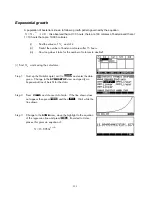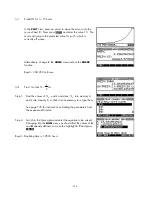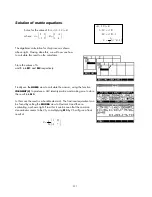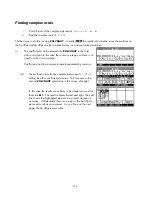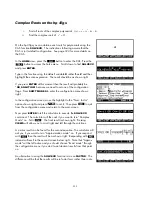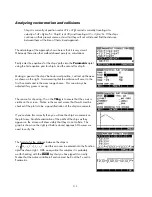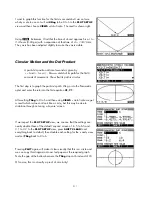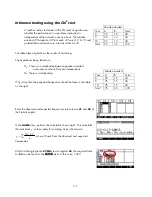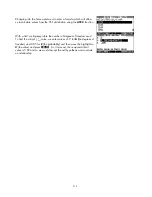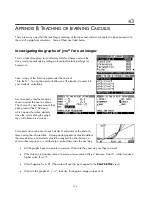
T
T
h
h
e
e
C
C
h
h
a
a
i
i
n
n
R
R
u
u
l
l
e
e
If desirable, an aplet is available from
The HP HOME
View
web site (at
http://www.hphomeview.com
), called
“Chain Rule”, which will encourage the student to deduce
the Chain Rule for themselves.
It is pre-loaded with five sets of functions, of increasing
complexity, the first three of which are shown right. The functions
are loaded into
F1
,
F3
,
F5
,
F7
and
F9
, while the functions
F2
,
F4
,
F6
,
F8
and
F0
contain an expression which, when
is
pressed, will differentiate the function above.
Through the worksheet which is bundled with the aplet, the student is directed to record the functions and their
derivatives and to look for patterns which will allow them to deduce a rule.
Obviously the student could simply type these functions in themselves but it would be very tedious and the
aplet automates the process so as not to obscure the learning.
O
O
p
p
t
t
i
i
m
m
i
i
z
z
a
a
t
t
i
i
o
o
n
n
A method which I find to be efficient in introducing the idea of optimization is via the maximization of the
volume of an open-topped box.
If we start with a sheet of card which is 15cm by 11cm then we can
form a box by removing squares from the corners and folding up the
sides. I find that it is quite helpful for the students to actually make such
a box, choosing for themselves what size square to cut out. They can
then explore, using the Function aplet, what cut-out size will produce the
maximum volume.
As can be seen above & right, the width, length and height can be
entered into
F1
,
F2
and
F3
as functions of the cut-out size
X
. The
volume can then be entered into
F4
as
F4(X)=F1*F2*F3
and this
function can then be plotted and the maximum found either through
successive approximations in the
NUM
view or by using the
FCN
tools in
the
PLOT
view.
319

